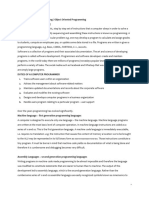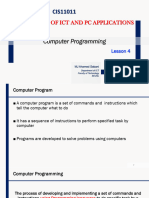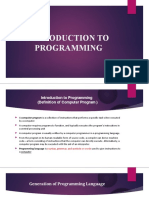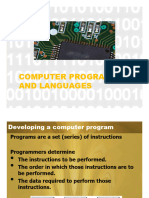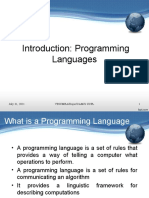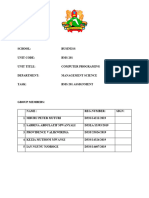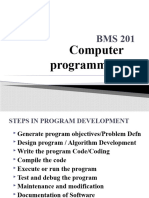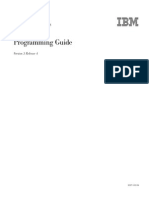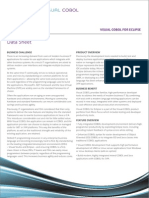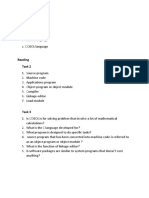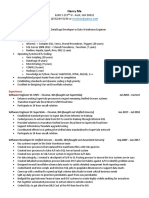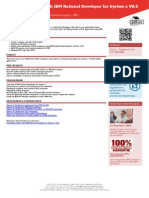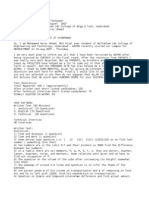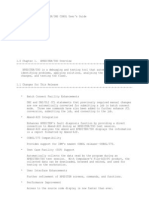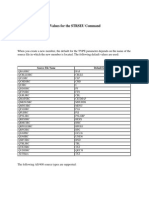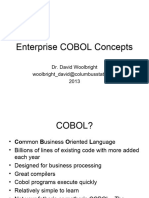0% found this document useful (0 votes)
18 views16 pagesBMS 201 Introduction To Programming 2021
The document discusses the history and types of programming languages. It begins by defining a program, programming language, and software. It then discusses the duties of a computer programmer and the generations of programming languages from machine languages to natural languages. It also covers low-level vs high-level languages and examples of popular programming languages like C++, COBOL, Java, CSS, HTML, and Python.
Uploaded by
Brian MutuaCopyright
© © All Rights Reserved
We take content rights seriously. If you suspect this is your content, claim it here.
Available Formats
Download as PPTX, PDF, TXT or read online on Scribd
0% found this document useful (0 votes)
18 views16 pagesBMS 201 Introduction To Programming 2021
The document discusses the history and types of programming languages. It begins by defining a program, programming language, and software. It then discusses the duties of a computer programmer and the generations of programming languages from machine languages to natural languages. It also covers low-level vs high-level languages and examples of popular programming languages like C++, COBOL, Java, CSS, HTML, and Python.
Uploaded by
Brian MutuaCopyright
© © All Rights Reserved
We take content rights seriously. If you suspect this is your content, claim it here.
Available Formats
Download as PPTX, PDF, TXT or read online on Scribd
/ 16





